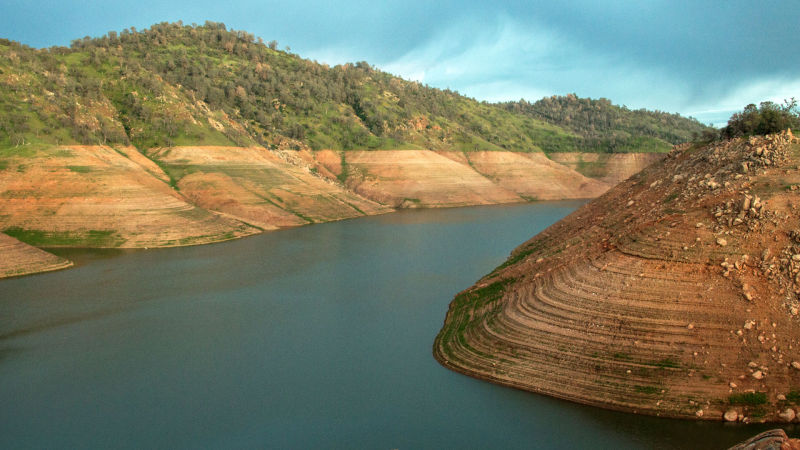On California's Water Policy
"We really rule our water on a series of laws that were instituted in the late 19th century, early 20th century, and there is no centralized planning for water in California." – William Patzert
On How California's Economy and Population Have Changed
"The history of California is written in great droughts. They wax and they wane. The last prolonged drought we had was from about 1945 to 1978. And that was followed by two very, very wet decades, mostly in the 80s and the 90s. We have a long history of wet decades and dry decades and the thing that's really fundamentally changed here in the last sixty years is that the population of California has quadrupled. Which that, all by itself, can create a drought, that increased demand, and also the structure of the California economy has dramatically changed.
"The California State gross domestic product is $2.4 trillion dollars. It's the seventh largest economy in the world. And the interesting thing – and in fact, there is a lot of water in the state of California, even though it's semi-arid. The question is, who gets the water and who makes the decision about who gets the water? For instance, agriculture was at one point the dominant force in California's economy, but today they get 80 percent of the available water, and they're actually only 2 percent of the state's economy. And so there has to be a re-evaluation of how water is distributed up and down the state of California, that is more in line with the actual reality of today's economy." – William Patzert
On the Challenges of Desalination
"One of the reasons desalination is so expensive is that it takes a lot of energy to take salt out of water. There have been enormous improvements in recent years in the technology,the cost has come down a little bit, but the margin for additional improvement is pretty limited because of the energy costs and the capital cost. These are big plants and they take a lot of energy and that's – that's one of the reasons why I don't see desal as a long-term overall solution – it's going to be an incremental piece of the puzzle." – Peter Gleick
"The other thing about desal is once you've desalinated the water, it's interesting because all the customers are uphill. And so it's a tremendous power drain because once you have that new, fresh water, you have to pump it uphill to get it to the customers. …[Discharing the bring back into the ocean] adds cost.You have to do it carefully so that there are no impacts on the ocean ecosystems." – William Patzert
On Water Re-Use
"There's enormous potential in California for treating and reusing water we've already used. The science and technology for wastewater treatment and reuse is advanced. We can produce incredibly high quality water from almost any quality of waste water, but we throw away a tremendous amount of our waste water, at the moment. That's a new source of supply. San Diego's moving in that direction, parts of Southern California are moving in that direction … We can expand our supply without tapping new groundwater, without building new rersevoirs by moving to reuse. I think that's going to be a key element in the future." – Peter Gleick
"In Orange County, we're actually doing toilet to tap, and so we're actively reusing water, not only for outdoor use, but for indoor use. And the technology is well-known, it's advanced, and it should be instituted up and down the state." – William Patzert
"Santa Clara Valley Water District has … built a fairly substantial plant to purify water. And that's to take normal recycled water, which one sees in the proper pipes, and notch it up several grades of treatment, to almost distilled water quality. What we're using now is blending that with traditional recycled water to improve the volume and the quality of that as it is distributed throughout the county.
